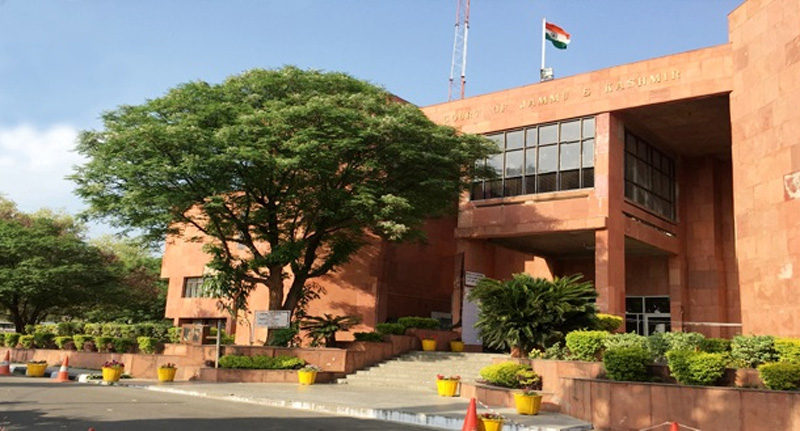Decides matter about land for new HC complex, Satellite Township
Mohinder Verma
JAMMU, Oct 9: Dismissing the writ petition regarding the land acquired for the development of new High Court complex, Satellite Township and Medicity in Srinagar district, High Court of Jammu & Kashmir and Ladakh has held that writ petitions on same cause of action/facts are not maintainable once the remedy on the same subject has already been availed in the civil court.
The writ petition was filed by the persons who were in possession of land in estate Rakhe-Gund Akshan and cultivating it for around several decades as per the provisions of the scheme of the erstwhile Government of J&K State.
However, vide Government Order No. 191-HUD of 2000 dated 24-08-2000 sanction was accorded to the transfer of land measuring 4200 Kanals and 19 Marlas in village Rakhe Gund Akshan to Srinagar Development Authority on payment of improvement charges as fixed by the Revenue Department. The land was acquired for development of new complex of High Court, Satellite Township and Medicity.
Thereafter, the petitioners filed one suit before the court of District Judge Srinagar challenging the Government Order No. 191-HUD of 2000 dated 24.08.2000. Moreover, in another suit the petitioners sought protection of their possession by filing a suit for permanent injunction against the Government. However, the suits were not subsequently prosecuted, as such these suits were dismissed in default and the applications for restoration of suits are pending adjudication.
Advocate G A Lone appearing for the petitioners submitted that the petitioners are not Camas but tenants, as such it is incumbent on the Government to initiate a process of acquisition under Right to Fair Compensation and Transparency in Land Acquisition, Rehabilitation and Re-Settlement Act, 2013 and pay compensation to the petitioners at the market value to be assessed in terms of the Act.
However, the counsel for the respondents—Mohsin Qadri, Senior Additional Advocate General, submitted that petitioners have, on the same cause of action, already instituted two civil suits before the trial court with respect to the subject land transferred to Srinagar Development Authority and the civil suits stand dismissed, and the applications for restoration are pending adjudication, as such, present writ petition is not maintainable.
After hearing both the sides, Justice Wasim Sadiq Nargal observed, “the suits have been dismissed in default. Such dismissal for default, which stands till restoration is allowed, if at all, obviates the scope of applying the principle of res-subjudice”, adding “however, applying the principle of Order IX Rules 8 and 9 of the Civil Procedure Code, 1908, if the cause of action in the suits and present writ petition is identical, then petitioners are barred from seeking similar reliefs in the present writ petition”.
Stating that Order IX Rule 9 bars fresh suit or proceedings in respect of the same cause of action in case the earlier suit was dismissed as indicated in Order IX Rule 8 of the CPC, High Court said that it was only with a view to curb the tendency of filing multiple suits, on the basis of the very same cause of action, successively even after the dismissal of the earlier suit that such a provision has been introduced.
“Supreme Court of India in its various judicial pronouncements has laid down that although the Civil Procedure Code may not be applicable in its entirety in writ proceedings but the principles enshrined therein apply with full force. Consequently, in view of the principles enshrined under Order IX Rule 9 prohibiting filing of a second suit for same cause of action, it would necessarily imply that on the same cause of action which was wholly or partly subject matter of suit filed by petitioner earlier and which has been dismissed in default, a writ petition under Article 226 is not maintainable”, Justice Nargal said.
“The essential bundle of facts on which the petitioners have based their right to relief were identical in the two suits and the present writ petition. Further, it is apparent from the order of dismissal of the suits that both suits were dismissed under the provisions of Order IX Rule 8 of the CPC as the counsel for the defendants was present and the plaintiffs (petitioners) and their counsel were absent. Therefore, to this extent, the writ petition is substantially barred by Order 9 Rule 9 of CPC”, High Court said.
Pointing towards alternate remedy, Justice Nargal said, “paying of compensation/improvement charges to Camas on the basis of assessment/valuation done years ago—-in the year 2001, is arbitrary. As such, I am of the considered opinion that the respondents have to reassess the amount of compensation/ improvement charges to be paid to Camas (petitioners) based on the parameters/formula to be taken into count as per rules”.
“As a necessary corollary, respondents are directed to reassess the payment of improvement charges to be paid to the Camas including petitioners within a period of two months”, read the judgment.
Trending Now
E-Paper


